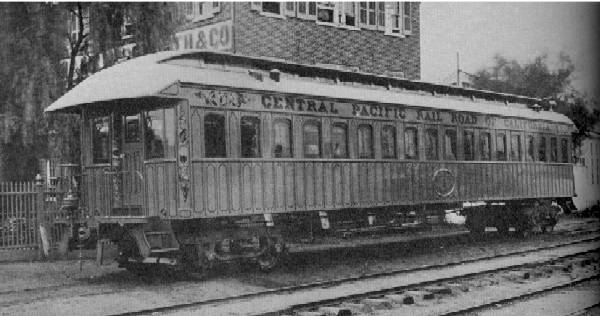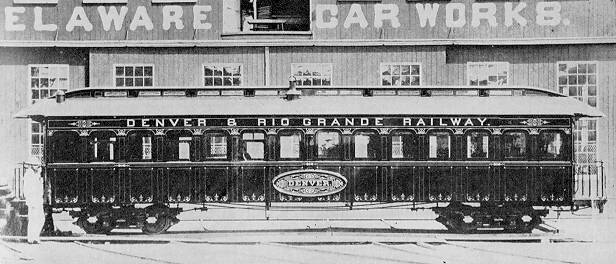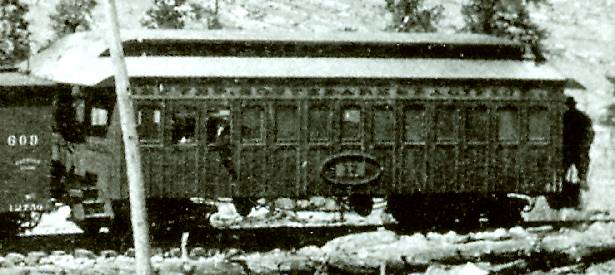The Bowers-Dure CarsBeing a dissertation on why they looked like they did.The so-called Bowers-Dure cars have long been a source of fascination to fans of the Denver, South Park & Pacific. Their distinctive platform roofs make them immediately recognizable. Their small arched single-pane windows continued to make them recognizable even after the roofs had been remodeled. Who would question that the 1927 (or is it 1936?) photo of C&S coach #51 shows a Bowers-Dure car? How did the South Park come to have these cars, and who built them, and why are they so unique? The story of how it came to have them is told under HISTORY on the COACHES #16, #17, #22 AND #24 page. The story of the obscure company that built them is told on the BOWERS, DURE & COMPANY page. The purpose of this page is to try to suggest why these unique little cars (35'-0") looked like they did. If you can’t figure it out, see last line on page. (No, we're not going to make it easy for you by giving you a link!)
During the period of 1871 to 1886 there were three car-building firms located in Wilmington, Delaware: Jackson & Sharp, Harlan & Hollingsworth, and Bowers, Dure & Co. Almost everyone interested in railroads is familiar with the name Jackson & Sharp. Some will have heard of Harlan & Hollingsworth. But who ever heard of Bowers, Dure & Co.? For some time those seeking information on these cars speculated that the name might be Bowers, Deere & Co., thinking that the handwritten “u” in Dure on company records might be a squished “ee”, or possibly trying unconsciously to make a connection with machinery maker John Deere. But Bowers, Dure & Co. was real. Simply the smallest and shortest-lived of the three. At that time, Wilmington lay between Philadelphia and Baltimore (it probably still does), and the Philadelphia, Wilmington & Baltimore Railroad was an important connection between the big cities. Sleeping cars had long-ago been invented. (The first known was running in 1838, twenty years before George Pullman “invented” it.) And that's where our chronology picks up. See what you can make of these facts:
NOTES on photos.Photo #1 can be found at
White/Passenger-218.
For those who either couldn’t, wouldn’t, or don’t enjoy, putting two and two together (or found our meanderings too convoluted to follow) — The Bowers-Dure coaches were designed and built in 1872 according to the then-standard practice of scaling down narrow gauge cars from standard gauge practice. This “practice” was followed by the three Wilmington, Delaware, car builders, which included platform roofs of the hooded profile that was apparently developed by Woodruff. By 1880, when the Bowers-Dure coaches were acquired by the South Park, they were quite “primitive” alongside current equipment. (Or as they say now in the interior decorating field, “retro!”) |




